The Impact of Personalization on Customer Lifetime Value
Did you know a simple 5% bump in retention can increase profits by 25 to 95 percent? Customer Lifetime Values (CLTV) is the gold standard for every marketer. It’s the accumulated revenue you will get from a customer across all the years you are connected to them. The good news though, especially when it comes to boosting CLTV, is personalization hits differently!
It’s not just a buzzword. Think of it as the secret sauce that allows businesses to improve stronger customer bonding and loyalty. Let’s explore how you can experience the full power of CLTV with personalization, enabling a significant growth in sales while nurturing meaningful, lasting relationships with customers.
Impact of Personalization on CLTV
Personalization is the key to unlocking the full potential of CLTV, and here’s why: It directly affects the three most important factors that contribute to the customer value: acquisition, retention, and long-term loyalty.
Customer Acquisition Cost (CAC)
Personalization can be a powerful way to reduce your Cost of Customer Acquisition (CAC) — the amount you have to spend to attract a new customer. Given the competitive market today, it’s not about acquiring just any customer. Instead, it’s about acquiring the right customers at the right cost. That’s where personalization comes in.
Delivering tailored marketing messages to your potential customers based on their unique needs, behaviors, and interests gives a huge boost to your chances of conversion. If someone sees an ad, email, or content targeted to their exact pain points or desires, they’re much more likely to engage and eventually make a purchase. A McKinsey & Company study revealed that companies leading in personalization can earn 5 to 15 percent higher revenue and 10 to 30 percent higher profitability compared to their competitors. By speaking to your target audience specifically, you’ll avoid wasting your efforts on outreach to audiences not interested in what you’re offering.
Concentrating on the right customers, with the right message, at the right time, increases your ROI and lowers your CAC. As a result, personalization is not only a strategic advantage, but also a cost effective one for businesses that want to grow without blowing their marketing budget.
Customer Retention
Once you’ve acquired a customer, you need to then keep them engaged and loyal to your brand. This is where personalization really comes in handy. Stronger emotional connections with customers (like feeling valued and understood) are two key drivers of long-term loyalty and are easier to cultivate with personalized experiences.
Customers are much more likely to purchase from you again if they see that you understand what they like, what they do, and what they need. Personalization doesn’t end after the first sale, and is about how you engage with your customers over time to build a relationship. Personalized product recommendations based on previous purchases and emails acknowledging milestones like anniversaries with your brand foster deeper connections.
Retention personalization isn’t about sending generic ‘We miss you’ emails, it’s about leveraging data to create experiences that serve to make customers feel like the brand has a clear understanding of them. So when customers feel understood, they stay longer, they spend more, and they become your best advocates.
Customer Lifetime Value (CLTV)
CLTV is an important measure of a customer’s worth to your business from start to finish of their relationship with your organization. And here’s the exciting part: CLTV is directly affected by personalization. Personalizing experiences to match the special needs of your customers not only improves the odds of customers coming back for another purchase but also encourages them to spend more over time. When the timing is just right, and the recommendation is just right, it can direct a customer to buy more, or upgrade to something higher in value — directly driving an increase in CLTV.
The previous study by McKinsey & Company showed that businesses excelling in personalization can have up to 5 to 15 percent more revenue, and up to 10 to 30 percent more profit. The key message is that personalized experiences are not only important in driving businesses to attract and retain customers, but also in building those relationships that grow in value over time. The result? A higher CLTV (meaning more revenue, a stronger customer base, and long term growth). Personalization is the fuel that turns a one-time customer into a loyal advocate who drives ongoing sales and profits for your business.
Web Personalization & CRO: Driving CLTV Growth
We’ve seen how personalization is important for both customer acquisition and customer retention, both of which affect CLTV. So, how do you make this strategy come to life on your website? Web personalization is not solely about aesthetics or design — it’s about giving each visitor a unique experience tailored to their behaviours, preferences, and needs. Dynamic content personalization furthers this experience by displaying content that’s relevant and interesting to each individual visitor.
CRO tools & web personalization tailors the content and behavior of your website. It gives visitors a sense that the site is custom designed for them, which naturally increases engagement and reduces conversion rates.
Web Personalization & CRO
Personalization, when combined with Conversion Rate Optimization (CRO), goes a step further. It’s about optimizing your site so you make more visitors into customers. Personalization makes it easier for the user to take action by reducing friction on the customer journey, showcasing the right content, or serving relevant CTAs at the right time.
Examples of Web Personalization for CRO
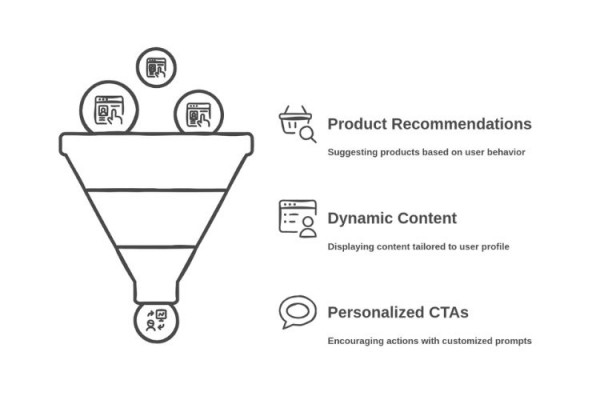
Personalized Product Recommendations
A website personalizes product suggestions, based on browsing history or purchase behavior. For illustration, If a customer has recently purchased running shoes, the site may suggest other accessories like socks, running apparel, or shoe cleaning products. This personalization not only makes the user experience better, but also increases the return probability, enhancing CLTV.
Dynamic Content
Personalization doesn’t begin and end with product recommendations. Based on user specific interests, demographics, or their past interactions with your site, websites can adjust the content they show to people. The site can showcase studies or testimonials that relate to a visitor, so the content is more relevant and persuasive. It’s a great way to engage as it clearly shows the user that you understand their unique needs.
Personalized Calls-to-Action (CTAs):
A one-size-fits-all CTA like “Buy Now” works well, but a personalized CTA does even better. What about a CTA like “Get Your Free Trial, [User’s Name]” or “Upgrading, [User’s Name]?” CTAs customized for the user’s behavior, e.g. their previous behavior or stage in the buyer journey, improve click-through. By personalizing CTAs, visitors can be led through the sales funnel with better chances of conversion — and the experience is streamlined and feels more unique to the visitor’s needs.
Actionable Strategies for Personalization
Personalization is effective, but only if you execute it right. These are some practical ways to personalize, driving engagement and increasing CLTV.
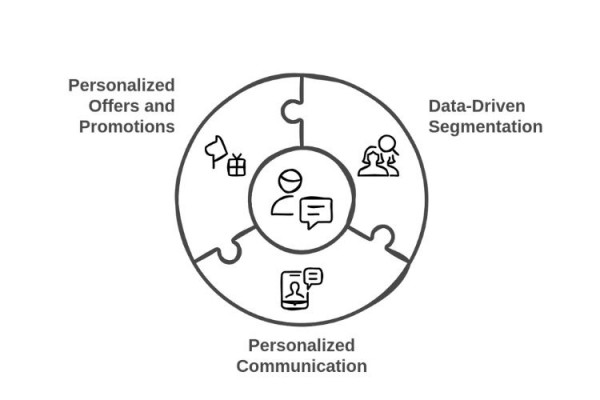
Data-Driven Segmentation
Understanding your customers is the first step to delivering the most relevant, personalized experiences. The key however is data-driven segmentation. Using customer data like demographics, purchase history, and website behavior, you can segment your customers into groups and create messages for specific groups.
Consider how Netflix and Spotify utilize user data to recommend personalized content, making sure customers are always engaged. These companies watch for patterns in customers’ viewing and listening and suggest what to do next. Just like how SaaS companies can recommend features, integrations, or new capabilities based on what users have previously engaged with.
Personalized Communication
When it comes to personalized communication, one static email, message, or notification just doesn’t cut it. This means that instead of blasting the same communication to every customer reaching out to you on each channel (email, social media, in-app messages), you can customize the tone and the usage of each, depending on the customer’s needs and interests. Something like an email, for example, about a new feature that a user has shown interest in, is much more engaging than a generic newsletter.
Personalized Offers and Promotions
Another way to increase customer satisfaction and CLTV is to offer personalized deals. Through analyzing how and why people behave the way they do, you can create custom offers, discounts, or even loyalty programs that resonate with each customer. It not only urges repeat purchases but also induces repeated commitment and boosts retention rates.
Amazon excels at this. Amazon regularly sends personalized promotions or deals based on past purchases in order to convince customers to buy related products or make the most of special discounts. Similarly, SaaS businesses can leverage this tactic by offering exclusive deals or add-ons based on what sort of value the customer got out of the platform.
Measuring and Optimizing Personalization Efforts
After you’ve set the stage with personalization, you need to make sure it’s working and delivering on those results you wanted. Personalization is a never-ending journey, so it’s important to measure progress to make sure that your efforts are really helping to boost your CLTV. Use some appropriate key performance indicators (KPIs) and do a bit of testing to know precisely what’s working and what’s not with your personalization strategies.
Key Performance Indicators (KPIs)
KPIs are your best friends when it comes to measuring personalization success. Look at metrics that correlate to your CLTV to know if your efforts are moving the needle. KPIs like customer retention rate, average order value, and customer lifetime value let you know if your tailored campaign efforts are keeping customers interested and coming back.
A/B Testing
The temptation may be to jump right into personalization and hope for the best, but the real power comes from testing. You can use A/B testing to experiment with different personalization tactics to find out what works best for your audience. Test personalized emails, recommended products, or dynamic content to get real data on what’s driving the most engagement and conversions.
For example, say you use personalized CTAs on your site. You can A/B test different versions: an uncomplicated “Buy Now” button, and “See Your Custom Offer, [User].” By tracking your click-through rates, you’ll know which one engages your audience and involves more conversions.
Continuous Improvement
Personalization is not a one and done effort — it’s a process that requires constant fine-tuning. A/B testing and KPIs will help you collect data and insights, so don’t be afraid to adjust and tweak. The trick is to never stop learning and adapting as you go.
Personalization has a critical role in increasing Customer Lifetime Value (CLTV) by increasing acquisition, retention, and long-term loyalty. It should be a key strategy that marketers prioritize to drive growth — the more personalized the customer experience, the greater the potential for lasting success.
What the future of personalization holds is exciting. As artificial intelligence (AI) and machine learning continue to develop, it will become much easier and smoother for brands to deliver hyper personalization that anticipates customers’ needs before they realize what they need. Marketers should continue to leverage these new advancements to further strengthen the bonds and make deeper, more significant connections that build customer loyalty and CLTV.
Share This Story
5 Comments
Leave A Comment
Get the latest growth ideas, strategies, and best practices delivered to your inbox.
Quick read that helps 7000+ subscribers.


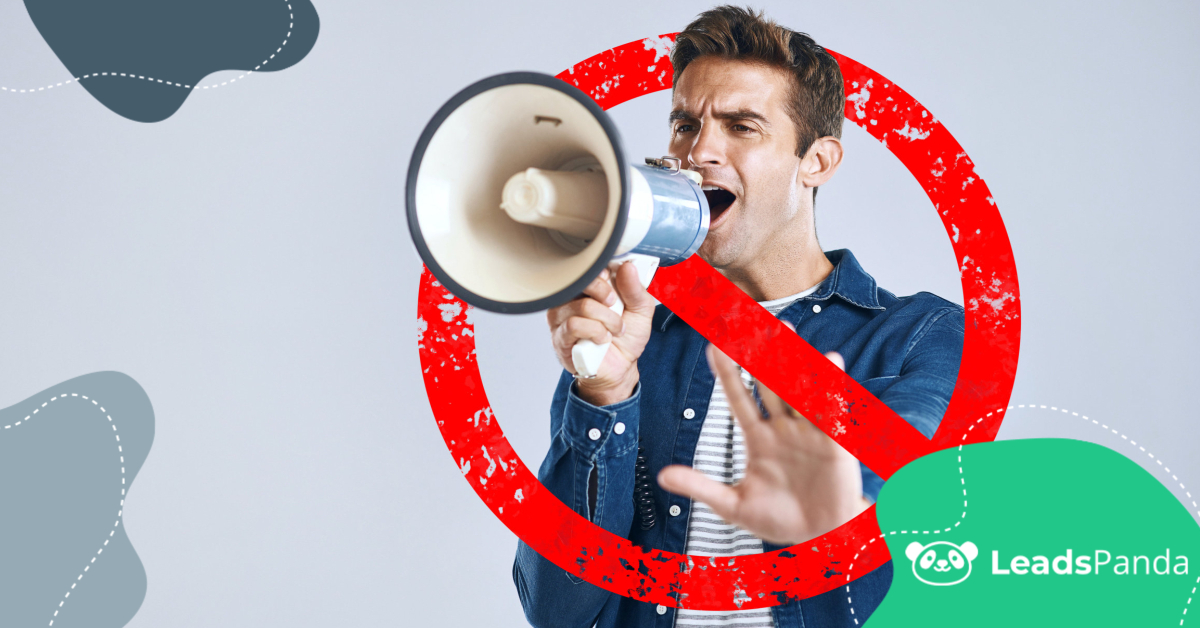
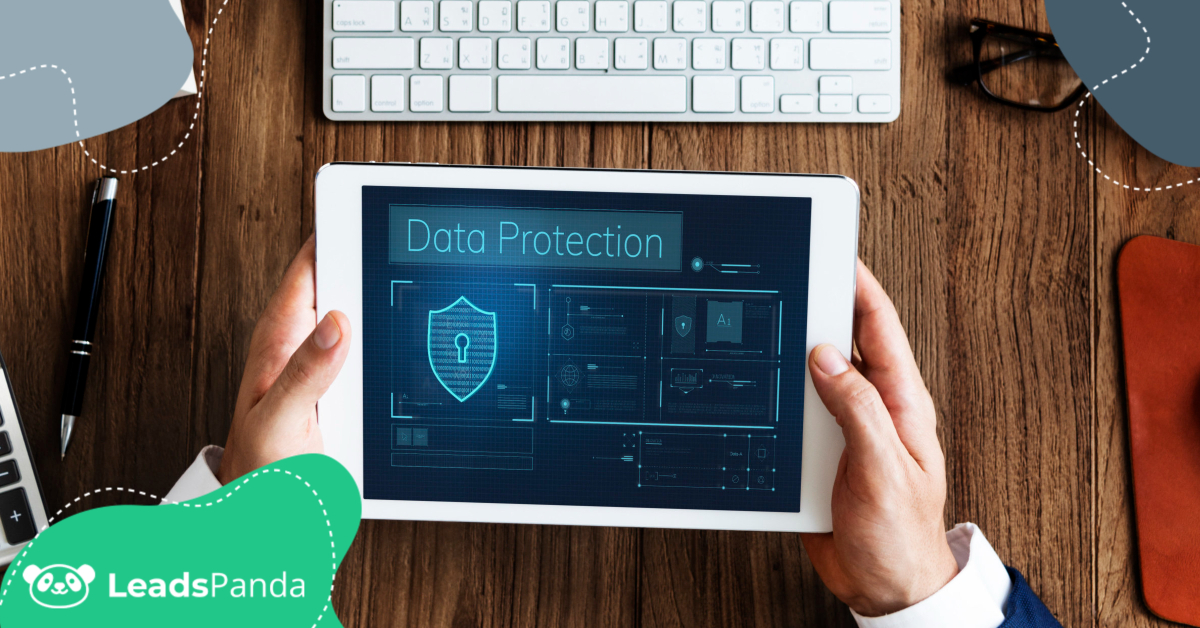


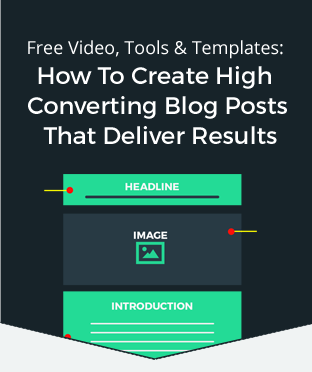
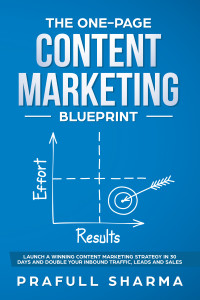


What an interesting insight. You make a great point about how tailored experiences aren’t just a “nice-to-have” anymore, but are essential. Thanks for sharing these kinds of insights!
[…] Messaging: AI allows marketers to identify user behavior and make individualized content for each user in the email, making it much more relevant for that user, thus increasing […]
[…] Once a subscriber becomes a customer, your focus shifts to building a long-term relationship. Personalized recommendations based on past purchases or interactions can increase acquisition, retention, and long-term loyalty. […]
[…] Businesses excelling in personalization can achieve 5-15% more revenue and 10-30% more profit. […]
[…] has completely transformed their relationship with their audiences, enabling brands to achieve a level of personalization in messages, offers, and experiences that simply did not exist a few years ago. However, with that […]